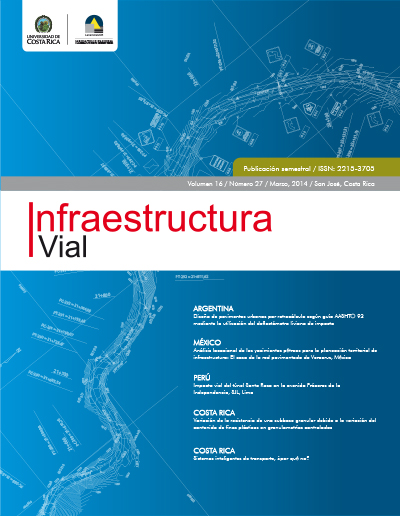Abstract
One of the uses of a Falling Weight Deflectomer is to determine the overlay thickness throughout backcalculation according to the AASHTO93 guide, which is widely used. This is achieved by the generation of deflections on the old asphalt layer, allowing different asphalt layer thickness in each a part of a road.
An analog application to determine the asphalt layer thickness is predictable if the deflection is caused above the base, regarding this there has been several successful experiences worldwide. This application could be helpful in urban street paving given the heterogeneity of the subgrade, the materials, the compaction process, and etcetera. However, the FWD is a high cost device and this makes it difficult to apply, especially because some paving works are not large enough to afford it.
Recently similar devices have appeared in the region and they could be a reasonable alternative, such as the Light Weight Deflectometer. The LEMaC,RoadInvestigationCenterfrom the National Technological University ofLa Plata(Buenos Aires–Argentina), regarding the situation described has made an analysis in that sense.
At the international level, various initiatives have been developed but they all arrive at a correlation constant, which according to the elastic layers theory would not be recommendable. Models of correlation should be developed instead.
A research project was developed in the LEMaC, in order to obtain those correlation models. This was done throughout the use of LWD carried out on road test surfaces and laboratory tests, which are presented with their determination coefficients.

